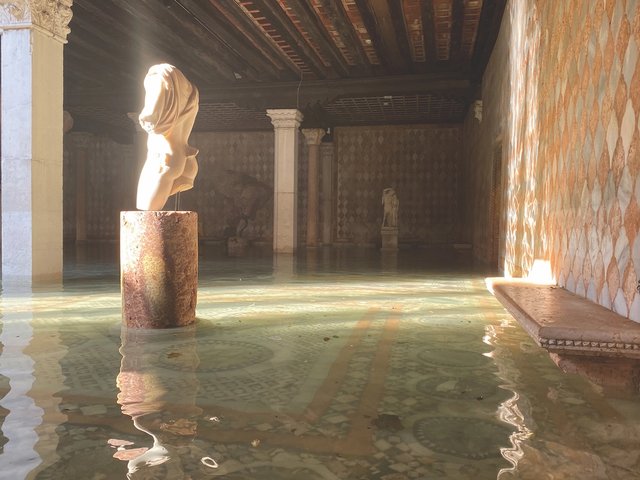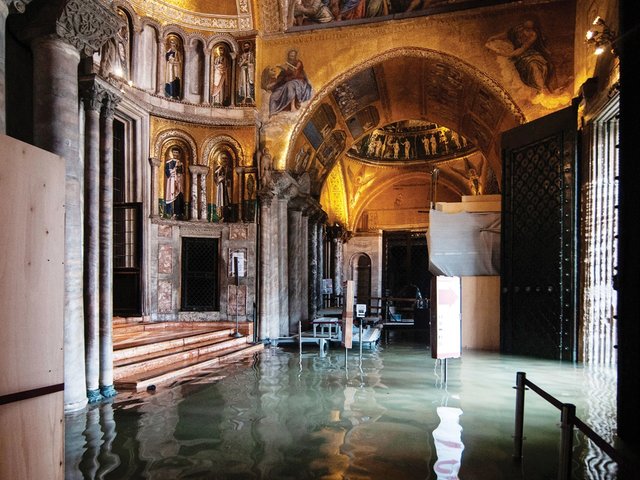Venice
The Venetian business community has paid for a feasibility study of the rebuilding work to be carried out on the Fenice.
A Commission presided over by the Prefect of Venice, Giovanni Troiani, has decided to use this as the basis for the project and to divide the rebuilding into three phases: the preliminary plan, competitive tendering and execution.
Currently, the preliminary plan is to be drawn up on the basis of the feasibility study by a group led by the chief engineer of the technical department of Venice town hall, Roberto Scibilia.
It is made up of an engineer from the local district council; an engineer from the council of the Provincia del Veneto; an engineer from the board of management of the Fenice; a representative of the environmental and architectural Soprintendenza of Venice and a representative of the artistic and historical Soprintendenza of Venice. There will also be an engineer from the fire service and an engineer from the water board.
Competitive tendering will be based on this preliminary plan. The selection committee for the competition has not yet been named, but it will be composed of specialists in engineering, acoustics and theatre design.
The winner will be responsible for the technical side of the re-development as well as for the rebuilding.
The Commission’s aim is to rebuild the theatre exactly as it was, saving and restoring all the parts that survived the fire.
Obviously current legal requirements and regulations will have to be observed, in particular those relating to places of public entertainment.
The proposed timetable was as follows: preliminary plan by the end of July; competitive tenders handed in by the end of the year; endorsement of the plan and results of the competition by March 1997; rebuilding completed by March 1999.
The feasibility study has estimated costs amounting to L145 billion (£62 million; $93 million), on which basis the Comune of Venice is proceeding.
This figure includes the cost of the preliminary survey, scaffolding, structural work, stage machinery, technical systems, fixtures and fittings, decoration and furnishings, services and a contingency sum.
This is no way to rebuild a theatre
Says Vittorio Gregotti, one of Italy’s leading architects. He told The Art Newspaper that a full design project should be worked out with acoustic specialists and experts in theatre design before the job goes out for tender, instead of expecting the tendering designers to work up their various, and inevitably different, schemes. He also says that there has to be a clearly defined “client” figure to run the project, and that neither the town hall technical department, nor the Prefect of Venice are suitable
Chronology of a theatre: 1770 to 1996
1770, 12 May: having assessed the twenty-nine entries, the committee of judges of the competition for the new Teatro La Fenice, Benedetto Buratti, Francesco Fantanesi and Simone Stratico, pronounce the architect Giannantonio Selva the winner.
1772, 16 May: official opening of the Teatro La Fenice with the opera “I giuochi d’Agrigento” by Alessandro Pepoli, with music by Giovanni Paisiello, and the ballet “Cupid and Psyche” by Onorato Viganò, with music by Giulio Viganò.
1808: construction of the Imperial Box to designs by the architect Giannantonio Selva, and redecoration of the interior of the theatre by Giuseppe Borsate. The redecorated theatre was re-opened on 26 December.
1836: 13 December: fire destroys the auditorium and stage; the Sale Apollinee survive the blaze.
1837, 26 December: the theatre re-opens with a performance of Luisa Paladini’s opera “Rosamunda in Ravenna” with music by Giuseppe Lillo, and the ballet “The Rape of the Venetian Maidens” by Antonio Cortesi. The auditorium was rebuilt by the Tommaso brothers and Giambattista Meduna, retaining Selva’s original curved shape; the interior was decorated after designs by Tranquillo Orsi, executed with the assistance of Sebastiano Santi. The Imperial Box was redecorated after designs by Giuseppe Borsato.
1854, 26 December: following the re-decoration of the auditorium in the rococo style by the Meduna brothers, the theatre re-opens with a performance of the opera “Marco Visconti”, by Domenico Bolognese, with music by Errico Petrella.
1878: the fifth tier of boxes is transformed into a gallery to designs by Lodovico Cadorin.
1904: further modernisation turns the fourth tier of boxes into another gallery.
1937: the Teatro La Fenice acquired by the Comune di Venezia; the task of modernisation is given to Eugenio Mozzi, an engineer. His brief is to enlarge the foyer, to build a scenery tower, to renew the hydraulic stage equipment, and to make various changes to the decor of the auditorium and to the smaller Sale Apollinee.
1938: the Ente Autonomo del Teatro La Fenice (an independent company) is set up; the season opens with a staging of Verdi’s opera “Don Carlos”.
1955, 31 June: the theatre is closed for building repairs, including the updating of mechanical equipment and the building of a rehearsal room at gallery level.
1996, 29 January: the theatre is destroyed by fire, only the façade and external walls and the office building being spared.



